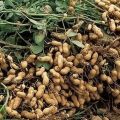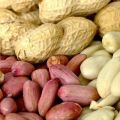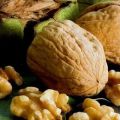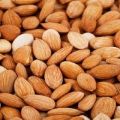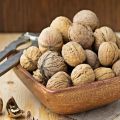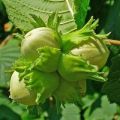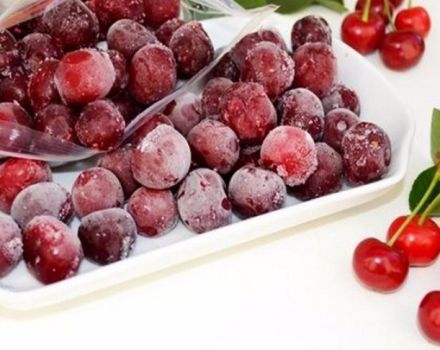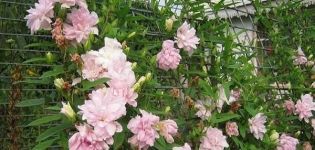Description of varieties and types of peanuts, useful and harmful properties, planting and care
Peanuts have beneficial properties for the human body and have many types and varieties. Growing this plant does not require much effort. The culture takes root in a warm climate, does not require diligent watering, and is not picky about the place and soil.
Peanut Description
Peanuts are an annual plant, reaching a height of 25-45 cm. The maximum height is 70 cm, in some species. It has a stem branched root, straight stems. Long leaves, feathery, elongated, up to 11 cm long, have a pointed edge. Blooms with yellow-red or white inflorescences. The flowering period is mid-summer. The fruits are swollen, oval in shape, inside there is a nut. Refers to legumes.
Nutritional value and composition of peanuts
100 grams of product contains 567 kcal. Of these, 49 grams are allocated for fats, 16 grams for carbohydrates, 26 grams for proteins.
Peanuts contain a large amount of fatty acids. The main component of the nut is oil.
Fatty acids that make up the oil:
- arachidic;
- stearic;
- linoleic;
- oleic;
- palmitic;
- myristic;
- cerotinic;
- lignocerin;
- lauric.
In addition to acids, the nut contains:
- proteins;
- starch;
- Sahara;
- amino acids;
- vitamins B, A, E;
- purines;
- glutenins.
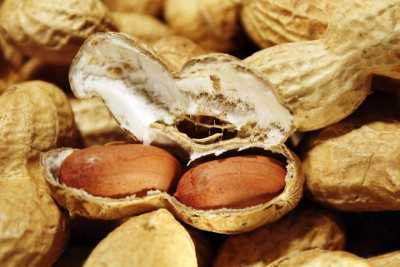
The microelements included in the composition include:
- sodium;
- potassium;
- magnesium;
- iron;
- calcium.
Types and varieties of peanuts
The varieties of peanuts practically do not differ from each other. They differ in fruit size, yield, height.
Virginia
Cultivation is possible with bundles and shoots. Reaches no more than 50 centimeters in height. Fruit pods form 5-10 centimeters from the soil surface. This type of nuts is used for confectionery purposes. It is added to cakes, chocolate, ice cream, and salted peanuts are prepared.
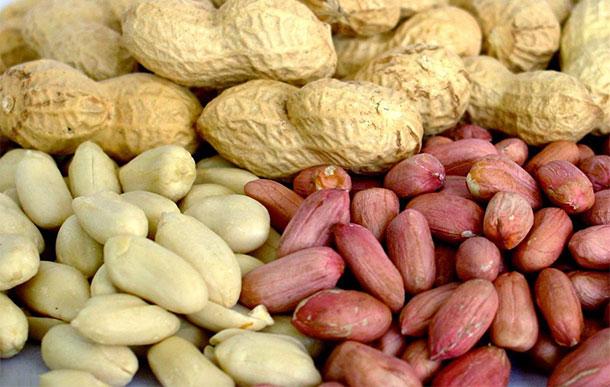
The most popular varieties are:
- North Carolina;
- Shulamit;
- Gregory;
- Perry;
- Wilson
- Hull.
Spanish
The founder of other species and varieties. It was cultivated for a long time as the main species and was widely used in all industries. By the middle of the 20th century, it was gradually replaced by more productive varieties, with large peanuts. The plant is low - up to 50 cm, the immunity is weak, the yield is average, the kernels are small, covered with a bright red shell. It is now grown for processing into peanut butter and spreads.

The most popular varieties are:
- Dixie Spanish;
- Natal is ordinary;
- Tamspan 90;
- White core;
- Old;
- Comet;
- Argentinian.
Runner
A group of these varieties was developed in the 40s of the 20th century. Plants are short, up to 50 centimeters in length.Leaves are elongated, densely arranged. Nuts of this variety are larger in size and have a good taste. The yield is high. The most popular varieties are:
- Georgia is green;
- Dixie runner;
- Bradford Runner;
- Egyptian giant;
- Fragrant 458;
- Tamran.
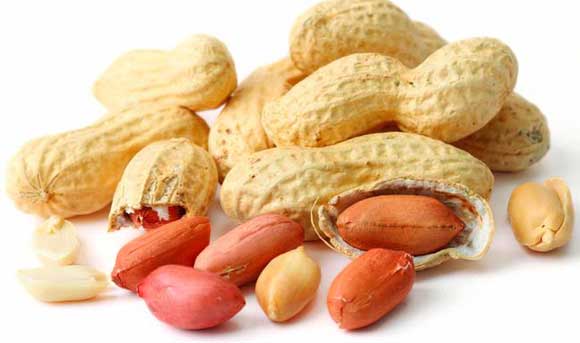
Redskin
It is characterized by large fruits covered with pink-red skin. Plants grow to a height of 1 meter. The leaves are often arranged, the plant is lush. Three nuts are tied in each pod.
Tennessee
Cultivated in the United States, according to its characteristics, it is distinguished by large fruits covered with a red-brown shell, reaching a height of about 1 meter. There are two types: Texas Red and White varieties. The main part of the obtained nuts is sent for processing and made from them peanut butter.
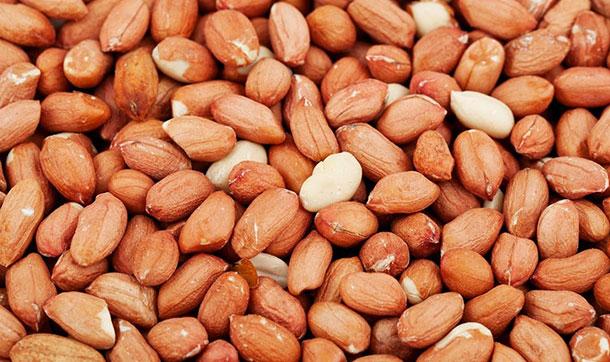
Useful and harmful properties of peanuts
Peanuts have the following beneficial effects:
- has antioxidant properties;
- improves the work of the heart muscle;
- renews old cells;
- improves memory and stimulates the nervous system;
- has a choleretic effect;
- envelops the stomach, is useful for diseases of the gastrointestinal tract;
- stimulate thrombocytopoiesis;
- improves male potency;
- has a beneficial effect on hearing;
- saturates the body with energy for a long time, dulls the feeling of hunger;
- promotes weight loss when taken in moderation.
Important! It is forbidden to take peanuts if you are allergic to them. This type of allergy is very dangerous and can be fatal.

Nuts are harmful in the following situations:
- A large amount of raw peanuts, leads to disorders of the gastrointestinal tract.
- For any diseases of the joints, it is recommended to cut nuts in the diet.
- If you eat a spoiled nut, it will cause serious poisoning, you must carefully examine the fruit before eating.
- Unlimited consumption of nuts is harmful to the stomach, difficult to digest.
Medicinal recipes
Peanuts are widely used in folk medicine. Prescriptions help eliminate the symptoms of certain diseases. Basic recipes:
- 100 grams of nuts are poured into 400 ml of water and boiled for 15 minutes. The resulting liquid is drained and taken in the morning on an empty stomach. The broth will eliminate inflammation in the lungs, has an expectorant effect.
- 100 grams of nuts, pour 800 ml with water. Boil for 10 minutes, use the broth together with peanuts. Reduces fever, helps to overcome colds.
- A glass of roasted peanuts a day can help fight Werlhof's disease.
- Pickled nuts in 6% vinegar without peeling. Insist one day and take 10 pieces a day. Normalizes blood pressure.
- A handful of fruits are chopped and fried. Mixed with crushed marshmallow. Pour 500 ml of boiled milk. Defend for 20 minutes. Pour the mixture into a thermos and leave for 10-12 hours. Take 100 ml 3-4 times a day. Helps to cope with prostatitis. Duration of treatment is 10 days.
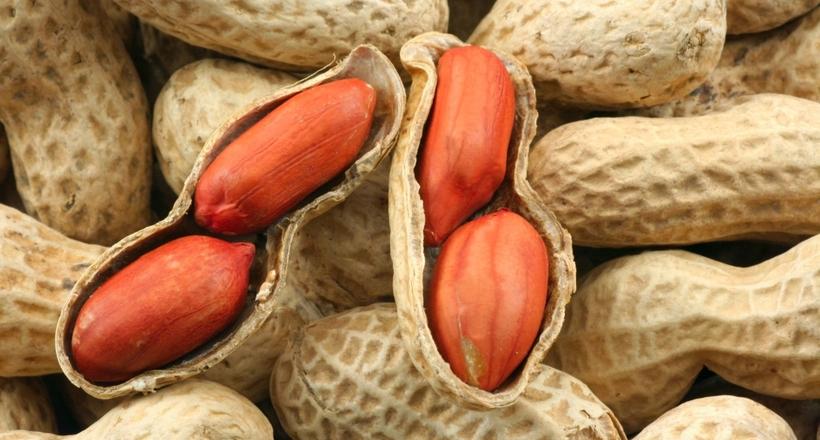
Planting peanuts
To grow peanuts in the garden, it is necessary to correctly regionalize the varieties for each territory. To increase the number of seedlings, seeds are planted at home in a container, and then transferred to the ground. You can plant seeds directly in open ground, but then fruiting will be later. Seedlings are prepared from April.
The seedlings are transplanted into warm soil, the seeds germinate at 13 ° C. A good time for this is mid-May. Nuts are sown in rows, observing a pattern of 60 cm between rows and 20 cm between plants. Buried into the soil to a depth of 7 cm. After transferring to the ground. The plant is abundantly watered and spud.
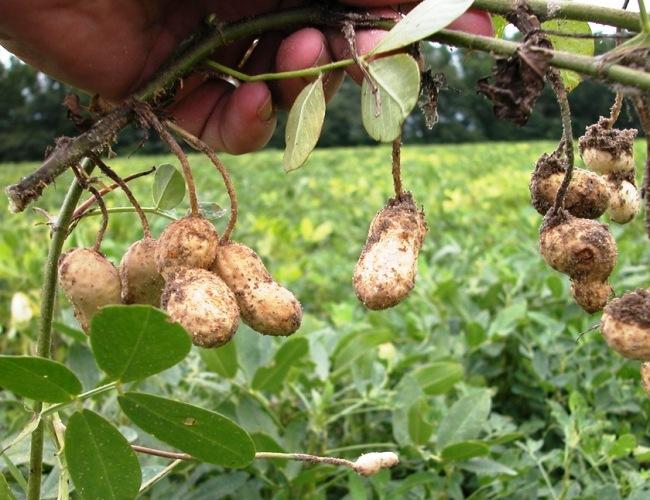
Important! For sowing, it is recommended to choose large seeds, peeled.This increases the number of shoots.
How to care for a plant
An important point is to carry out regular hilling of peanuts. The first time it is carried out 10 days after flowering. Flowering occurs in mid-July, the flower blooms early in the morning and fades in the evening. Watering is carried out depending on the climate.
In dry weather, watered every 10-12 days, taking into account the rains. Overflowing the soil can destroy the plant, it is necessary to ensure that the soil is constantly moist. Apply drippers for irrigation or warm water. One month before harvesting, watering is completely removed. For growing peanuts, a light day of at least 8 hours a day is suitable.
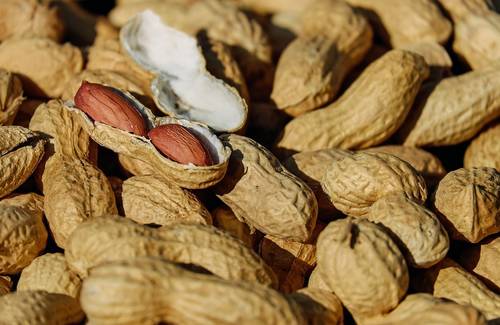
Diseases and pests of culture
The main diseases that affect the bush:
- Powdery mildew. The leaves are covered with a white bloom, gradually die off and turn yellow. Prevent the development of any fungicide, use according to the instructions on the package.
- Phylostictosis. Brown specks form on the foliage, with a purple border. Use fungicides for control.
- Black spot. It develops at high humidity, black spots appear on sheet platinum, which slowly grow.
- Fusarium wilting. It is manifested by the formation of rot in the roots. The development of the plant stops, parts of the stems slowly die off, the bush dies.
- Gray rot. Most often, damage occurs after flowering. Brown spots appear on the areas of stems and leaves, the formation of fruits stops.
Pests that infect the bush:
- Aphid. For prevention, the topsoil next to the plant is covered with tobacco dust and ash.
- Click Beetle. They penetrate the peanut shell and eat the nut from the inside. For prophylaxis, small holes are dug next to the crop and carrots or beets are left in them to lure insects away. The pits are covered from above with plywood or a wide board, after the triggering of the trap, insects are destroyed.
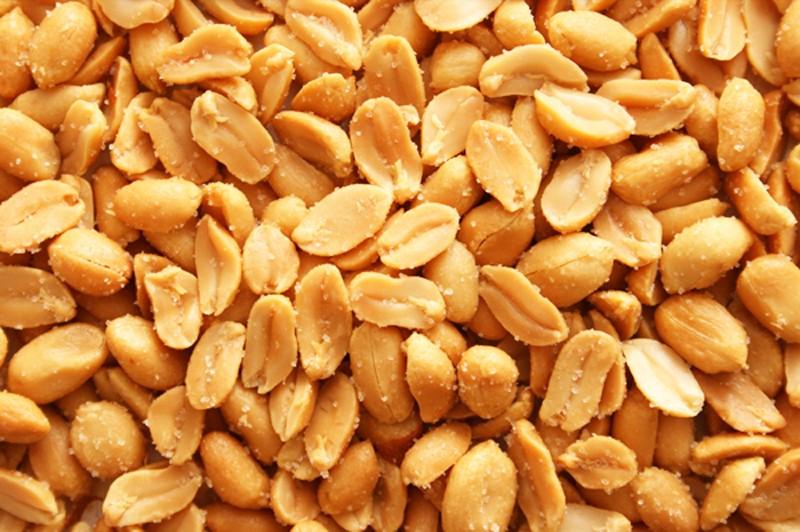
Collection and storage conditions
Harvesting begins when the peanuts turn yellow and the fruits are effortlessly released from the pods. It is important not to delay this moment, as inappropriate weather conditions will ruin the harvest. The process takes place in two stages. At the first stage, all plants are collected and shafts are formed from them. Leave to dry for several days. At the second stage, separate the pods from the stems. The fruits are dried at a temperature of 40 ° C, in a room with good aeration.
Peanuts are stored in the form of pods, hatching is performed before use. A room with a constant air temperature of 8-10 ° C is suitable for storage. The fruits are laid out on racks, in layers not thicker than 10 cm, or laid out in fabric bags.


